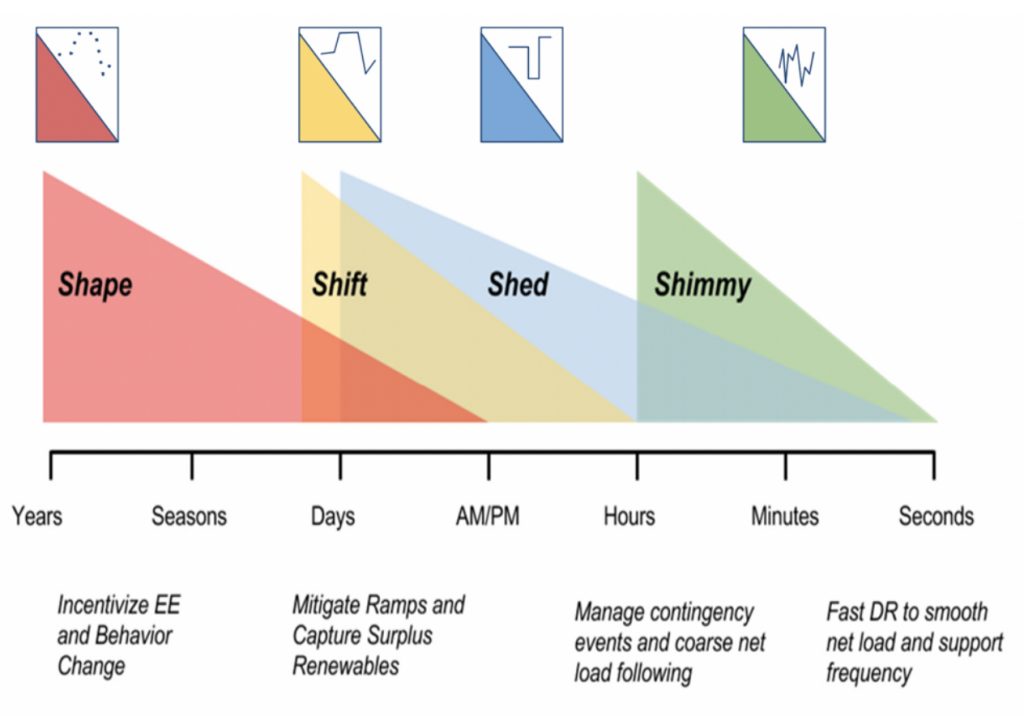
24 Aug Demand Response 101
 What is Demand Response?
What is Demand Response?
BY MADDIE SLIGH AND SANIYA SYED, D+R INTERNATIONAL
You may have heard of Demand Response (DR), but do you know why it is so important for grid modernization? In this blog post, we will take you through the basics of demand response technology and outline why it is such a beneficial process for grid operators and subsequently commercial, industrial and residential buildings to adopt.
DR is a process that allows utilities and grid operators to adjust a facility’s electricity consumption patterns through occasional and short-term reductions in electricity use.
Utilities and grid operators may send a signal to trigger DR for a number of reasons, such as when:
- Electricity demand is close to the available electricity supply
- Electricity prices are peaking
- Grid integrity may be at risk
Automated Demand Response (ADR) allows the signal to be triggered automatically, sparking a change in consumption without the need for the end user to make manual adjustments to the system. Utilizing ADR, a utility can trigger a variety of adjustments to an enrolled facility’s system, such as:
- Dim a facility’s lights by 30% for four hours
- Adjust a facility’s thermostat by four degrees for two hours
- Cycle on or off certain appliances, such as the water heater
In return for participation in DR programs, businesses and residences receive financial incentives. These benefits can be in the form of DR program participation incentive payments or credits and/or simply by reducing the cost of electricity bills by reducing energy consumption when electricity is most expensive.
Four Types of DR
There are four different ways that DR can change a facility’s normal energy consumption: shed, shift, shape, and shimmy.
- Shed means that energy consumption is reduced during peak hours, and that energy use isn’t moved to other, non-peak times.
- Shift describes shifting energy consumption to peak energy production times in order to prevent over generation of energy, such as to take advantage of renewable energy production.
- Shape works to alter a customer’s peak consumption through time-of-use (TOU) prices and incentives. This means that the shape of the customer load profile changes based on TOU electricity rates.
- Shimmy, which can be thought of as fast DR, can be used for loads that can respond and adjust quickly to short-term increased strain on the grid and grid disturbances.
 Figure 1: Lawrence Berkeley National Laboratory (LBNL) types of DR
Figure 1: Lawrence Berkeley National Laboratory (LBNL) types of DR
In LBNL’s Phase 3 of The California Demand Response Potential Study, they highlight the opportunity for Shift DR as we transition to more renewable energy and decarbonization of the grid.
Why is DR beneficial?
The inner workings of DR are nuanced, but once the technology is established in a service area it offers a unique opportunity to manage electricity demand with an ever-changing grid. This flexibility becomes especially beneficial with the increased utilization of renewable energy sources, which produce variable amounts of energy at times that are not always aligned with peak demand.
Electric vehicles (EVs) offer another opportunity to take advantage of load flexibility through DR. EV batteries can store electricity during peak production times, and DR processes can also alleviate some of the burden on the grid from increased electricity demand from EV charging.
DR technology offers many benefits to grid operators and to facilities. If you would like to learn more about DR technologies and the opportunities that are available, consider setting up a training for your staff or contacting your utility to learn more about opportunities that are available in your service area.

